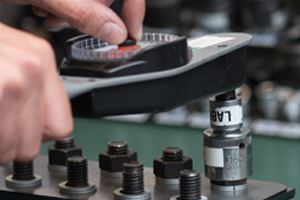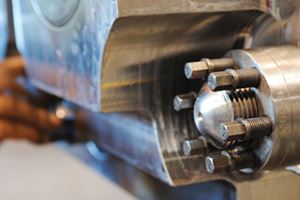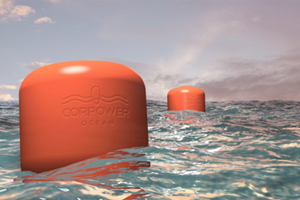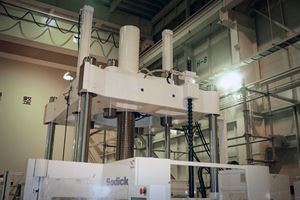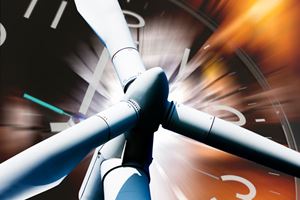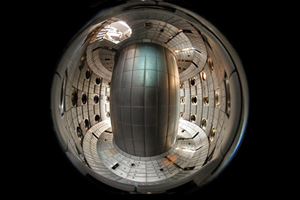Think Big
With Superbolt you can tighten even the largest bolts with hand tools. Like the Nord-Lock product range, the result is safer, faster and more accurate bolting, making them a perfect match. Bolted takes a closer look at Nord-Lock Group’s latest acquisition.
Rolf Steinbock’s eureka moment, which came in 1974 while on a service call to one of his scrap choppers in a US steel mill, solved at a stroke two basic problems with big bolts. One is that they take a massive amount of torque to tighten. The second is that they have a nasty habit of working loose. When told that the bolts on the gearbox of the otherwise perfectly-functioning scrap chopper required tightening a couple of times a day, Steinbock had a flash of inspiration which he hastily scribbled down on the proverbial napkin. His solution worked perfectly, and the bolts never came loose again.
Steinbock’s solution, to split one big torque into a number of smaller torques, was commercialised as Superbolt. “He was actually surprised that nobody had thought of it before,” says his son, Allan Steinbock, who is the company’s Vice-President. Word spread to customers beyond the steel industry and, today, Superbolt’s multi-jackbolt tensioners can be found in a wide range of applications, from satellites to submarines to the Large Hadron Collider at CERN.
The problem Steinbock tackled is the fact that for bolt diameters bigger than about M24, it is very difficult to create enough torque to tighten or loosen a bolt. Simple physics shows that the torque needed to properly pre-stress a bolt increases by the third power of the bolt diameter. Therefore as the bolt diameter increases, the torque requirement for tightening it soars.
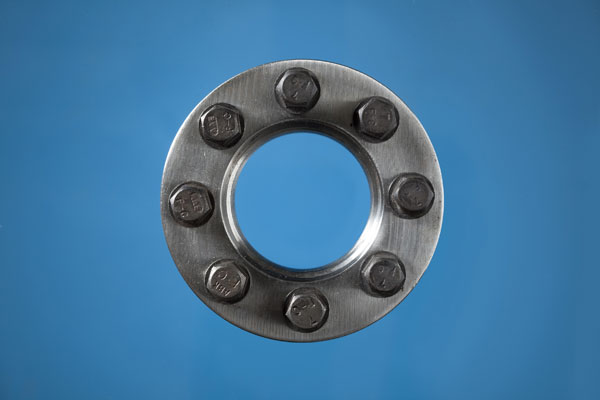
Traditionally this has required some heavy-handed methods, but all have their drawbacks. The sledgehammer gives little control, is inconsistent and often causes injuries. Thermal tightening, crane wrenching, hydraulic wrenching and hydraulic tensioning can be expensive, inaccurate, time consuming and unsafe.
However, Superbolt tensioners, which are designed as direct replacements for standard nuts and bolts, allow for the tightening of large bolts with simple hand tools, making bolting more accurate, faster and safer. “The primary benefit of Superbolt is the reduction of torque required,” says Steinbock. “You only need a handheld torque wrench or air tool.”
Superbolt tensioners utilise a ring of hardened jackbolts threaded into a nut body. The Superbolt tensioner is first threaded by hand onto a new or existing bolt or stud. Once positioned, bolt tensioning is accomplished by tightening the circle of jackbolts. A number of different product lines are based on the same basic concept.
“Because we are able to generate the proper preload, we achieve the proper holding power and we don’t have bolts or nuts coming loose, even in high-vibration situations,” says Steve Busalacchi, Engineering Manager. “This reduces expensive downtime: both downtime required for maintenance to retighten loose bolts, but also downtime caused by studs breaking due to insufficient holding power.”
Because Superbolt can be installed with hand tools, there are also time savings. “We install quicker and we remove quicker,” says Busalacchi. “People’s first impression is that it will take longer because they have several bolts to tighten instead of one. But once they see that you spin it on by hand and perform a quick tightening pattern similar to mounting a wheel on your car with hand-held tools, then they are impressed by the time savings we provide.”
The safety benefits of the Superbolt solution are highly appreciated at a time when many industries have implemented safety programmes. “Safety is a huge factor for us,” says Steinbock. “Alternative methods require equipment which can create extremely dangerous conditions. Our products are safe to use, and this is a huge benefit to our customers.”
While Superbolt products are available off-the-shelf, about half its sales are for special non-standard items in sizes all the way from M16 to over M1450. “What makes Superbolt unique is our ability to adapt to different situations, whether this is reviewing temperatures and changing materials, or customising designs to fit customer requirements. We are very adaptable and want to make sure that the customer receives the right solution and is satisified,” says Busalacchi.
Users of Superbolt products including General Electric, Siemens and Rolls-Royce appreciate the fact that that they can receive finite element analysis (FEA) carried out by independent organisations. “These organisations can provide an independent assessment of what we are telling our customers about our calculations,” says Head of Engineering at Nord-Lock AG. “It boils down to safety and customers’ peace of mind.”
A current installation of Superbolts shows just how extreme an environment they can handle. About 2,000 tensioners made from exotic nickel-based alloys have been installed at the Max Planck Institute for Plasma Physics in Greifswald, Germany, where research will be carried out into the principles of a fusion power plant, which, in the future, could provide safe, green energy from the same process that takes place inside the sun.
“The Max Planck Institute has chosen Superbolt because the ambient conditions under which the research is to be carried out are quite horrendous – we are talking about -270°C, radiation and an absolute vacuum, as well as extremely high loads.” “Basically, we are dealing with outer space conditions found close to the sun.” And highly compact machines mean that there is no access for heavy tools. “The forces are so immense that they require large bolts and the only way to tighten large bolts without heavy tools is the Superbolt principle,” says Schneider.
Such characteristics and performance mean that once customers have tried Superbolt, they rarely return to the troublesome methods of the past.
“The hardest part, as with any product, is to get people to try it,” says Steinbock. “But once people have tried it, our repeat order rate is phenomenal. Customers now count on us to provide a quality product and we receive tremendous loyalty from them in return.”
Superbolt in use
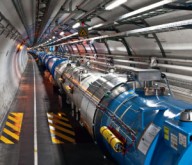 Gold award from CERN
Gold award from CERN
Superbolt supplied more than 1,500 high-strength mechanical tensioners, expansion bolts and multi-jackbolt tensioners to the CERN Large Hadron Collider in Switzerland. Multi-jackbolt tensioners were used for an application requiring a very high clamping force, but with limited space for tightening the bolts. Since only hand tools were required, the need to create anchor points for heavier tightening equipment was eliminated. Superbolt won the CMS gold award for its contribution to the project.
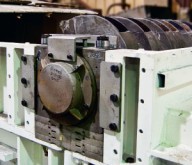 Ideal mine solution
Ideal mine solution
The severe environment of an underground coal mine takes a brutal toll on crusher drum bits. It is a violent application with high RPMs and constant pounding as the bits cut into coal and rock and often break off, requiring repair underground, where accessibility is limited. With Superbolt, space restrictions are of little concern because only small hand tools are required, making the process easier and faster.
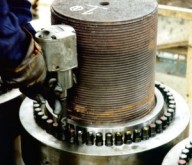 Cheaper and faster
Cheaper and faster
Large ammonia reactors often require the use of large and expensive hydraulic tensioners, and tightening or untightening can take several days, working around the clock, and using cranes. At one such reactor, not only was the initial cost of the Superbolt tensioners only a fraction of the cost of the hydraulic tensioners they replaced, but the installation took two labourers only 5 hours.
